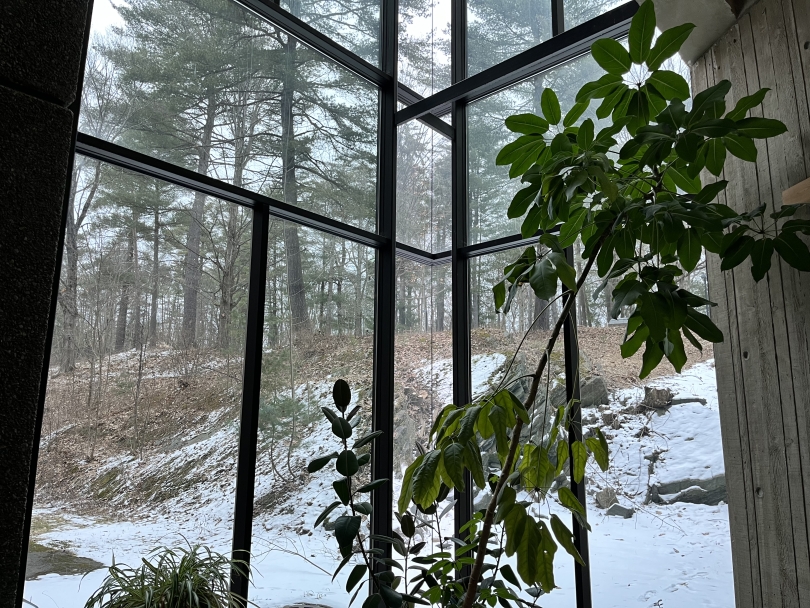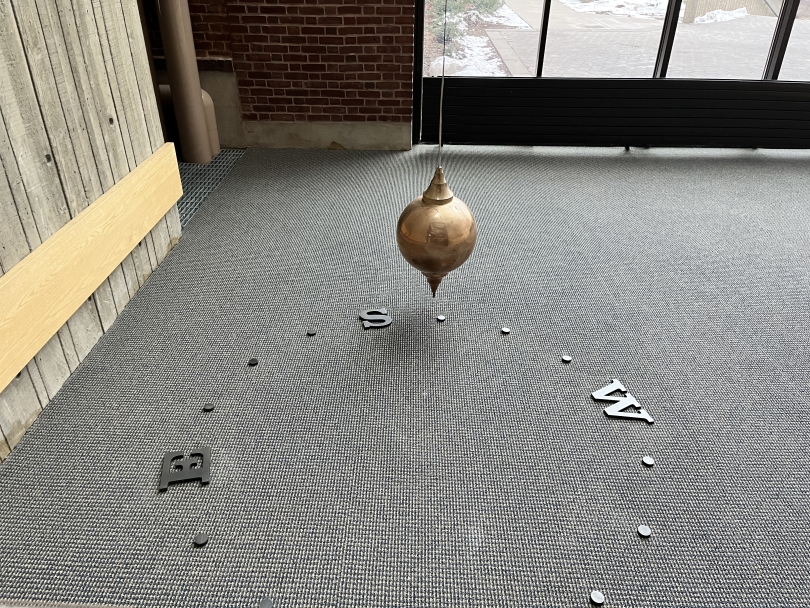
Nooks and Crannies: A Fairchild Adventure
Tucked between Wilder Hall and Burke Laboratory's classic Dartmouth red brick stands a huge building covered in blue glass. In an architectural style completely distinct from anywhere else on campus, the Fairchild Physical Sciences Center stands out from its neighbors. Fairchild is the home of Dartmouth's Geography department and a central hub for the physical sciences. It connects Wilder (Physics and Astronomy building) and Burke and Steele (Chemistry buildings), which is how I first came to explore it. Last term, my chem lab met on the third floor of Steele, and I ended up using Fairchild as a scenic shortcut.
Entering Fairchild, the first thing you notice is the building's height. Four stories, each floor's balcony design makes the whole building feel tall and wide open. The huge blue-green windows fill the entire space with bright natural light that feels like summer, even on February afternoons.
On the first floor, I was immediately drawn to the back window, where I could see a beautiful view of one of the more natural parts of campus. There was also a variety of potted houseplants, which is very welcoming during the winter. I also noticed a door to the outside, which I promise will become important later.

Next, I took a peek at the massive wooden sculpture in the middle of the building. It's titled Harlequin, and it was created from untreated wood from across New Hampshire and Vermont by a Dartmouth alum. It's hard to capture on camera just how smooth and perfectly aligned each piece is, but in person, the whole sculpture is smooth, almost like a wave of wood.

Dartmouth's Foucault Pendulum, a scientific display (and art exhibit) that demonstrates the Earth's rotation, is also located on the ground floor. The Pendulum appears to simply swing back and forth, but over time, the plane of oscillation changes, and the directions between which the Pendulum swings shift. On paper, I admit, it isn't the most exciting thing. But seeing it in person really puts into perspective the scale of the world we live in and how powerfully universal laws impact our daily lives.

Heading upstairs, I spotted a display showcasing fossilized footprints and geological formations, including some truly massive crystal clusters. These are part of the "Dana Petrology Collection," a geological catalog from the Earth Sciences department.

In the stairwell, I suddenly noticed the interesting material that composes most of the supports in Fairchild. It seems like concrete but has a distinct, vertical wood texture covering the surface. The organic texture almost gives the impression that Fairchild has just grown from the ground.
Next, I came across a bookcase labeled "FREE BOOKS." It held many copies of Local Knowledge by H.C. Petersen, a book on living resources and natural assets in Greenland, written dually in English and Greenlandic. I love coming across all the opportunities to learn scattered across the Dartmouth campus, so I picked up a copy and will hopefully start working through it this week!
With my exploration complete, I returned to grab my backpack and again noticed the building's back door. Still in adventure mode, I headed outside to look at the hill behind the building. That's when I noticed that the door was locked. Trapped between the building and a steep, icy ledge, I began the long walk around the other side of the science cluster. Although it added quite a trek to my blog research, it was worth it for the beautiful view of College Park. Oh well, all in a day's work.

















